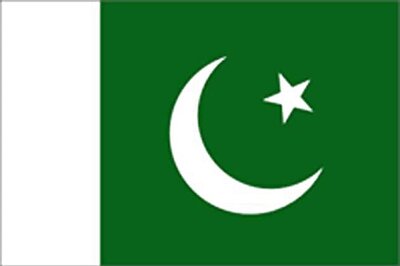
views
Following the Ram Navami violence across the country, especially in West Bengal, the bleeding-heart liberals are out in the open with their prescriptions to safeguard India’s secular fabric. As an antidote to growing polarisation in the country, they suggest the “law-abiding citizens of India” (meaning Hindus) should avoid going to “Muslim areas” to celebrate their festivals. In other words, these saner minds want Hindus to celebrate their festivals in “Hindu areas”!
Nothing can be more sinister than this liberal advice. For, it not only legitimises the ghettoisation of certain areas, but also gives them a bad name for all times to come. However, the moment a Hindu turns back and asks if this means the entry of Muslims in “Hindus areas”, during “Hindu festivals”, would also be restricted, the cat is out of the liberal bag.
The sane liberal voice suddenly becomes louder, coarser, and even intimidating at times. They foresee the end of democracy and secularism if it is attempted in any form. The very people who call for a barrier on the entry of Hindus in the so-called Muslim areas want no such barricading for Muslims in the so-called Hindu areas. They hail the presence of Muslim food vendors in Durga Puja pandals, calling it a symbol of India’s syncretic culture. And not long ago they were up in arms when some Navratri pandals in Gujarat barred the entry of Muslim boys.
These blatantly biased “liberal rules” need to be called out precisely because it follows what Daniel Pipes calls, in another context, “the Rushdie rules”. According to the Rushdie rules, says Pipes, “editors, authors, newspapers, publishers and academic teachers abide by a new set of rules which limit the freedom to discuss Islam with the same methods, terminology and frank inquisitiveness which are considered normal in discussing Christianity or Hinduism”. The Rushdie rules provide exceptional powers to Islam vis-à-vis other religions, just the same way the “liberal rules” give special access to Muslims in a secular country!
Coming back to this year’s violence on Ram Navami, which unfortunately has become an annual affair, one senior TV journalist who never gets tired of invoking his liberal-secular credentials, invents a political angle to the violence. “The 3 states where the unfortunate Ram Navami violence has taken place are also 3 key states where (as per most polls and observers) the BJP faces its biggest challenges in 2024 general elections: Bihar, Bengal and Maharashtra. How should one read this folks?” Now that’s called a narrative setting, giving a free pass to all except Hindus and the political party that is believed to be sympathetic to their cause.
In their unholy haste to corner a particular community and a political party, these pretentious liberals fail to realise that the Ram Navami violence is not a post-2014 phenomenon. In 1871, as per the British official records, Bareilly saw widespread Ram Navami violence; this was despite the fact that the route for the procession was agreed upon by all the parties. Even before Bareilly, historical records suggest how in 1680, Sambhaji Maharaj asked “Turks” to desist from burning pandals and creating disturbances.
Like the Jahangirpuri riots in the wake of the 2022 Ram Navami procession, this year’s violence too exposes liberal duplicity: The basic narrative being pushed is that the Muslims were being provoked through loud music and sloganeering of “Jai Shri Ram” near mosques. Incidentally, the same brigade keeps a steadied silence when Muharram processions pass through a temple area and do a similar kind of sloganeering. In fact, by that parameter, the majority community should take offence to a muezzin’s Azaan calls on loudspeakers that inadvertently remind non-Muslims that their religion is false and the only true God is the one worshipped by Muslims! The liberal propensity to run with Hindus and hunt with Islamists is too glaring to ignore.
This phenomenon persists not just in religious activities but in all walks of life. Christopher Hitchens, in his ‘Foreword’ to Ayaan Hirsi Ali’s Infidel: My Life, writes, “Across the intellectual spectrum of the West, voices are raised to say that the problem is not the exorbitant demands made by Muslim bullies… No, the problem is that of people like Ayaan, who upset and ‘offend’ the ‘faith community’ of Islam.”
In India, this phenomenon gets magnified because there’s a liberal bogey that gets extremely uncomfortable with the civilisational idea of India. It invariably puts — either out of ideological compulsions or as a victim of coloniality — Hindu ethos as antithesis to modern, secular values. This may, in some way, explain why the Jai Shri Ram chants make Indian liberals uneasy, but when a girl in hijab shouts “Allah hu Akbar”, this same set of people calls it an act of defiance against Hindutva patriarchy!
The Ram Navami violence is primarily the outcome of a sense of supremacy among Abrahamic faiths. It is this innate sense of superiority that made Khilafat leader Maulana Mohammed Ali, who had initially hailed Mahatma Gandhi as “the most Christ-like man of our times”, but “from the point of view of religion”, the Mahatma remained “inferior to any Mussalman though he be without character”!
It is this understanding of Islam, deliberately downplayed by liberals, that made Dr BR Ambedkar not just support the creation of Pakistan but also the transfer of population. In Pakistan or the Partition of India, he matter-of-factly calls Islam “a close corporation” that makes “distinction” between Muslims and non-Muslims. “The brotherhood of Islam is not the universal brotherhood of man. It is the brotherhood of Muslims for Muslims only. There is a fraternity, but its benefit is confined to those within that corporation. For those who are outside the corporation, there is nothing but contempt and enmity,” he writes.
At the core of it all, however, is the political incompetence of the state. This fact is borne out quite clearly when one looks at the spread of the Ram Navami violence across the country: This year it was more viciously pronounced in those states where the administration was popularly perceived as either weak or pro-minority, as in the case of Bihar and West Bengal, or a state whose administration might have suffered due to coalition constraints, as might have been the case with Maharashtra. In contrast, Uttar Pradesh led by Yogi Adityanath ensured the Ram Navami processions across the state largely passed off peacefully. His success, despite presiding over a much bigger state, geographically and population-wise, with a significantly large and politically assertive minority community, exposed the administrative hollowness of others.
A riot takes place when a religious ideology/institution believes in its exclusivity as well as supremacy; it also increases when the state is perceived to be weak and biased. Such flare-ups gain momentum when perpetrators believe they can get away with such crimes. There is no doubt there were a few lumpen elements among Hindus during the Ram Navami processions who did provoke the other side. Some of them screamed provocative slogans, and a few tried scaling the walls of mosques. But then it exposes the failure of the police in handling what is clearly a law-and-order issue. Such elements should have been dealt with an iron fist, but when the administration is in dilemma about the state government’s political will and religious neutrality, there is bound to be dithering in taking timely action.
India should bulldoze the very idea of “Muslim areas” before a section of liberals conspires to provide it with a secular cover. Such concepts have no place in a democracy. It is against the idea of civilisational India. It is also against the very notion of Western secularism.
The author is Opinion Editor, Firstpost and News18. He tweets from @Utpal_Kumar1. Views expressed are personal.
Read all the Latest Opinions here




















Comments
0 comment